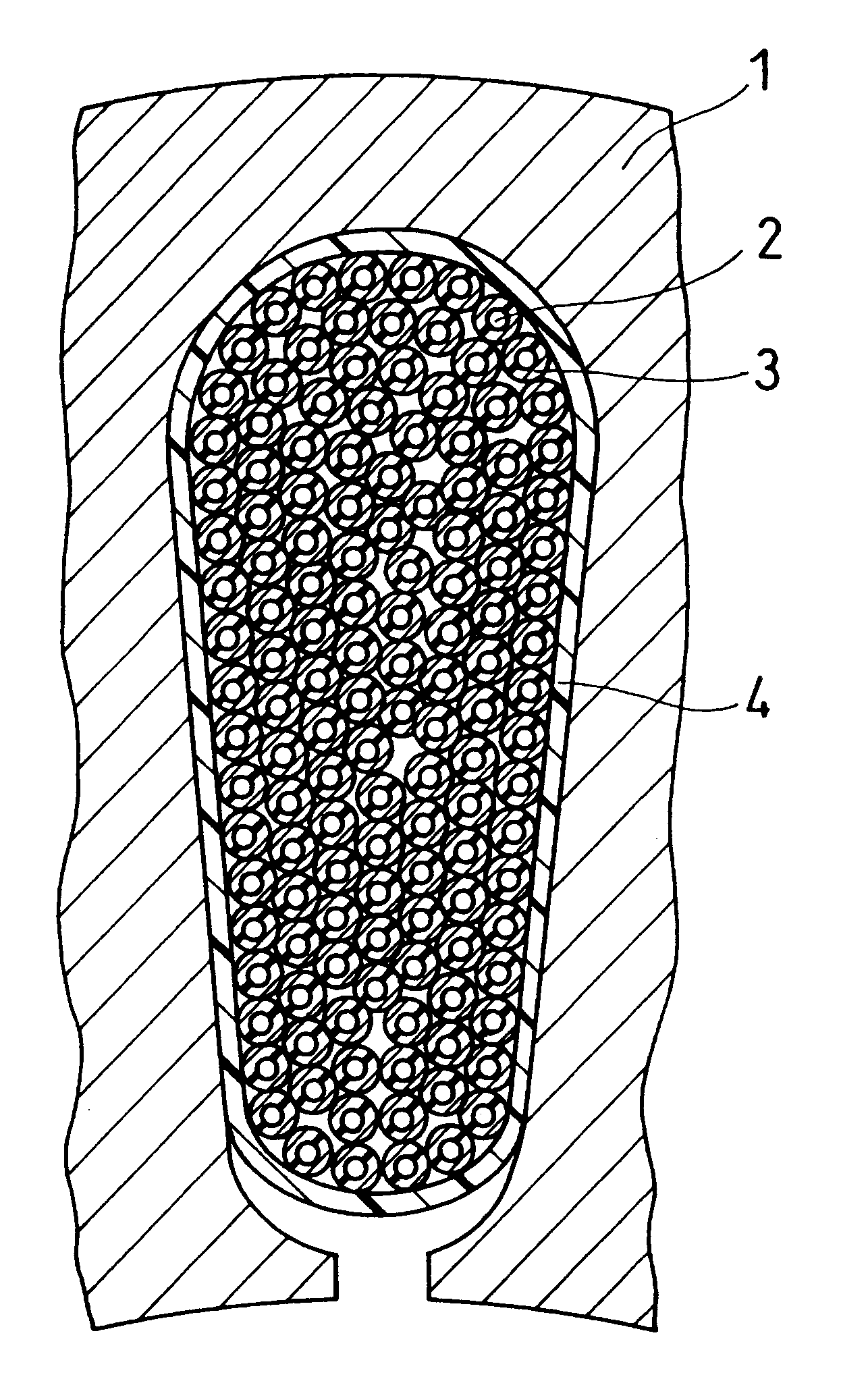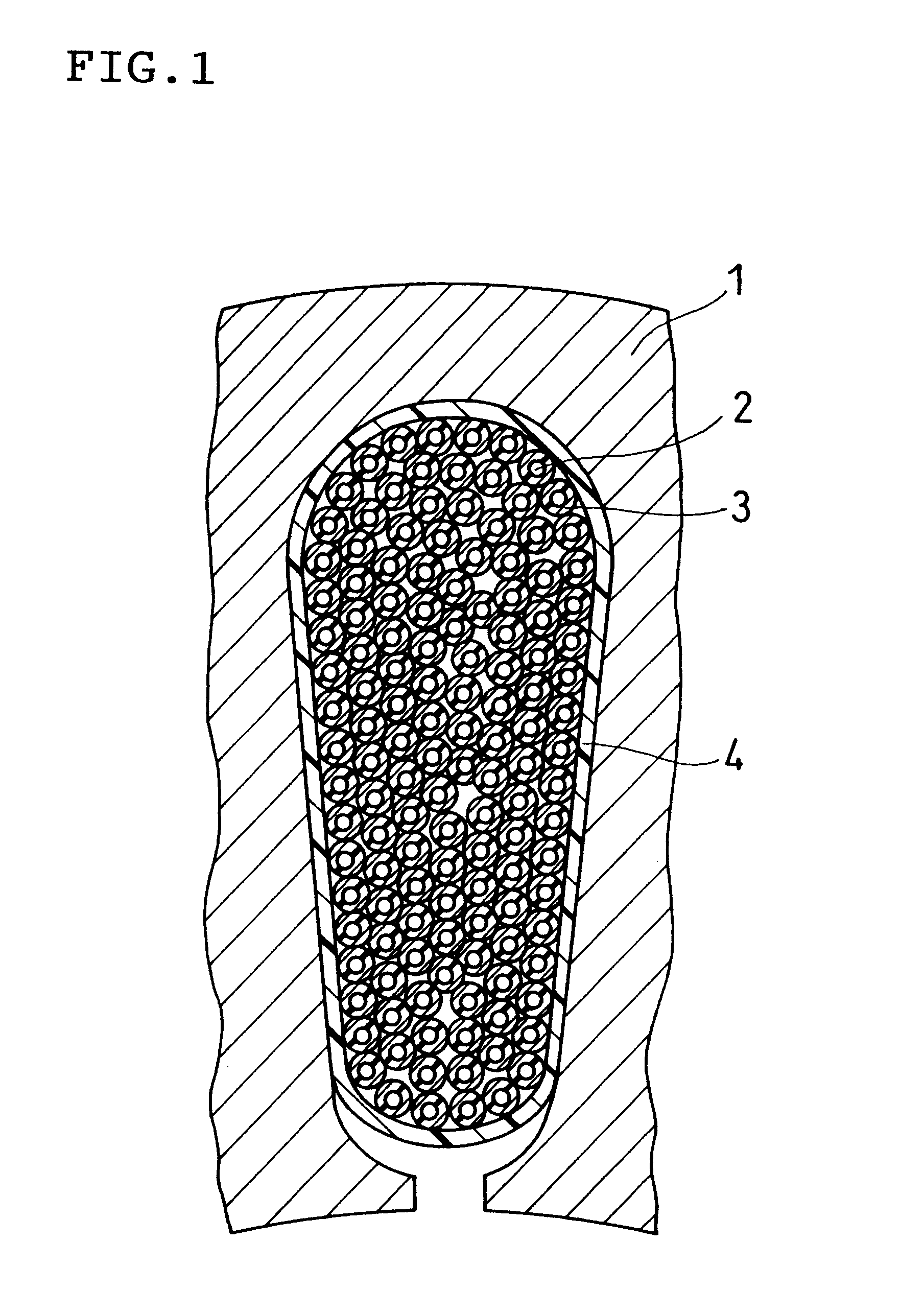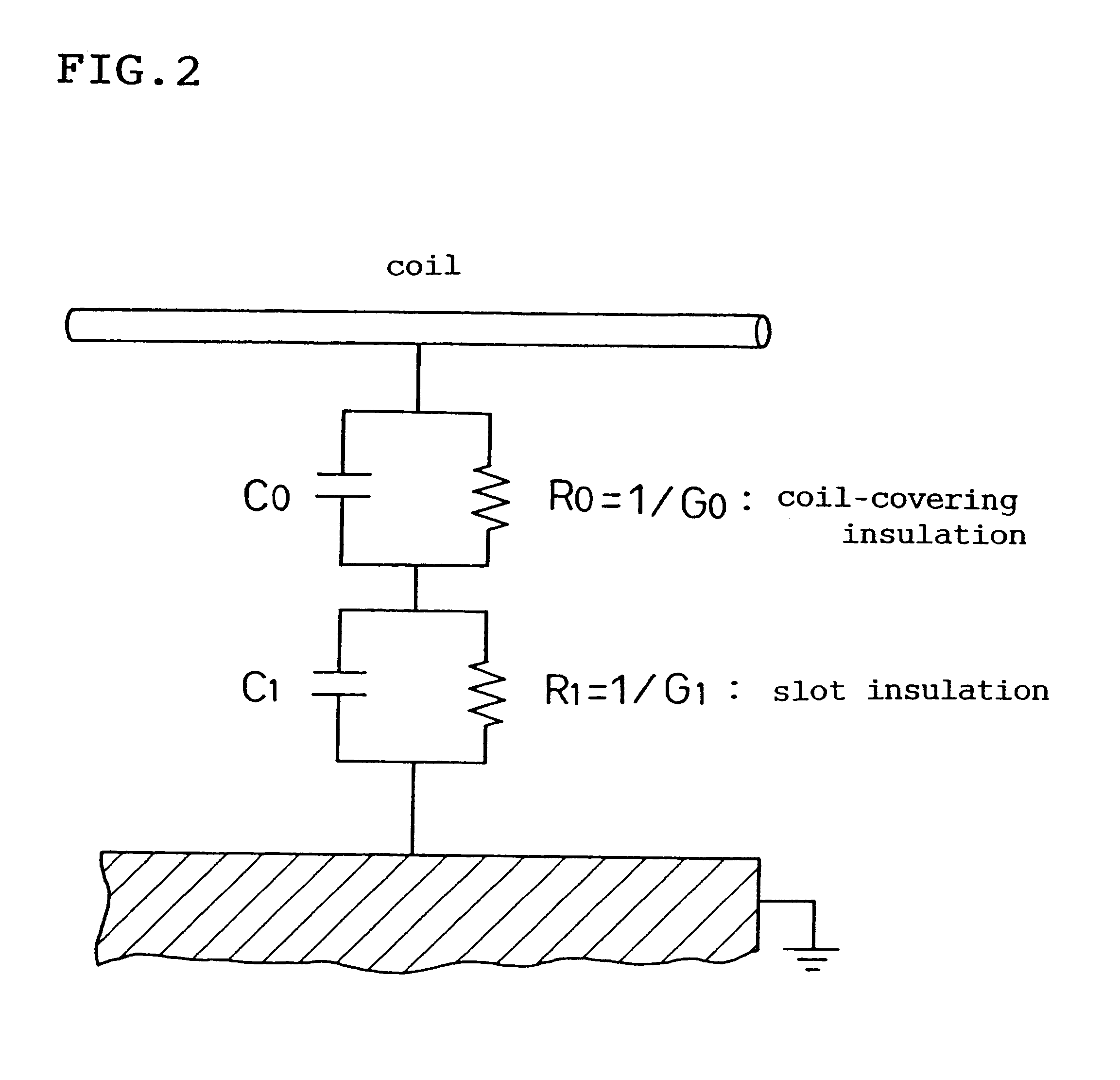Compressor and refrigeration system
- Summary
- Abstract
- Description
- Claims
- Application Information
AI Technical Summary
Benefits of technology
Problems solved by technology
Method used
Image
Examples
example 2
A refrigerant system device was configured in the same manner as in Example 1, except for using a rotator employing a composite film obtained by laminating three sheets of polytetrafluoroethylene films each having an average thickness of about 120 .mu.m to have the total thickness of about 360 .mu.m for the slot insulation of a slot insulation part, as well as carbon dioxide and a mineral oil as the refrigerant and lubricating oil, respectively, of the working fluid, and the device was operated under the same conditions to measure the leakage current between the device and the ground for evaluation.
At this time, the specific dielectric constant of the film in the frequency range of from 60 Hz to 100 kHz was about 2.1.
With respect to the leakage current 100 in the comparative reference system, the leakage current in the configuration of the present example was reduced to about 65, achieving an about 35% reduction.
example 3
A laminated multilayered film, obtained by sandwiching a porous polyethylene naphthalate (PEN) film having a film thickness of 250 .mu.m, a specific dielectric constant of about 2.5 at a test frequency of 10 kHz and a porosity of 20 vol % by two sheets of PET films having a thickness of 10 .mu.m, was used for the film insulation of the rotator. At this time, a specific dielectric constant of about 2.7 was obtained for the multilayered film.
A refrigerant system device was configured in the same manner as in Example 1, except for using a rotator employing this film for the film insulation of the slot insulation part, as well as isobutane and a mineral oil as the refrigerant and lubricating oil, respectively, of the working fluid, and the device was operated under the same conditions to measure the leakage current between the device and the ground. At this time, the leakage current was about 88 with respect to that of the comparative reference system, achieving an about 12% reduction i...
example 4
A multilayered composite film, obtained by sandwiching four sheets of polytetrafluoroethylene-ethylene copolymer (ETFE) films each having a film thickness of 20 .mu.m and a dielectric constant of 2.6 by five sheets of PEN films each having a film thickness of 30 .mu.m and a dielectric constant of 2.9 in an alternating manner, was used for the film insulation of the rotator. The total film thickness was 230 .mu.m at this time, and the specific dielectric constant was about 2.8 at a test frequency of 1 kHz. It should be noted that forming the film into such a multilayered structure did not cause any extreme rupture of the ETFE film during the processing in the manufacturing of the rotator.
A refrigerant system device was configured in the same manner in Example 1, except for using this rotator, as well as carbon dioxide and a mixture of a mineral oil and an alkyl benzene oil as the refrigerant and lubricating oil, respectively, of the working fluid, and the device was operated under th...
PUM
| Property | Measurement | Unit |
|---|---|---|
| Pore size | aaaaa | aaaaa |
| Ratio | aaaaa | aaaaa |
| Dielectric constant | aaaaa | aaaaa |
Abstract
Description
Claims
Application Information
 Login to View More
Login to View More - Generate Ideas
- Intellectual Property
- Life Sciences
- Materials
- Tech Scout
- Unparalleled Data Quality
- Higher Quality Content
- 60% Fewer Hallucinations
Browse by: Latest US Patents, China's latest patents, Technical Efficacy Thesaurus, Application Domain, Technology Topic, Popular Technical Reports.
© 2025 PatSnap. All rights reserved.Legal|Privacy policy|Modern Slavery Act Transparency Statement|Sitemap|About US| Contact US: help@patsnap.com



